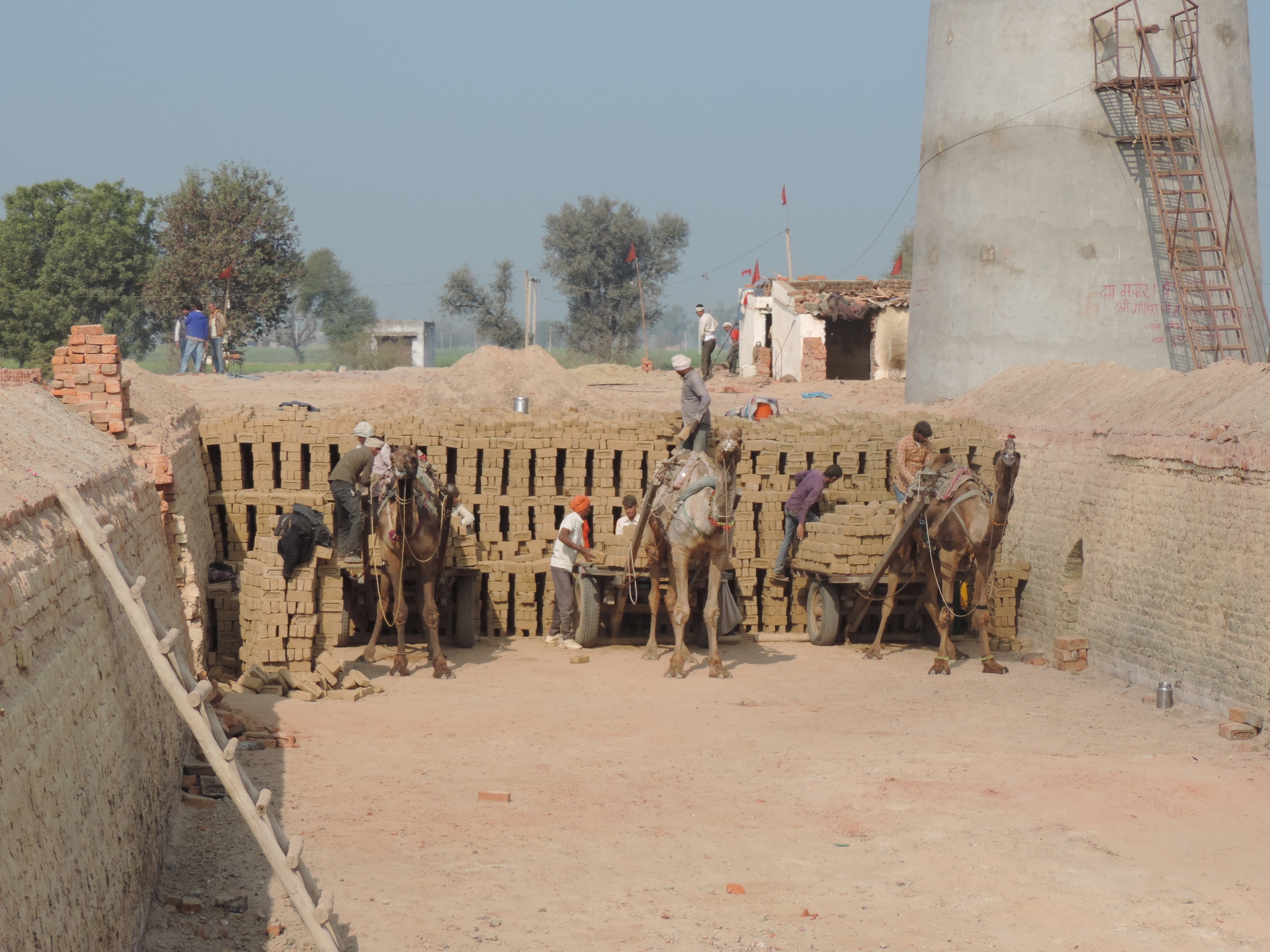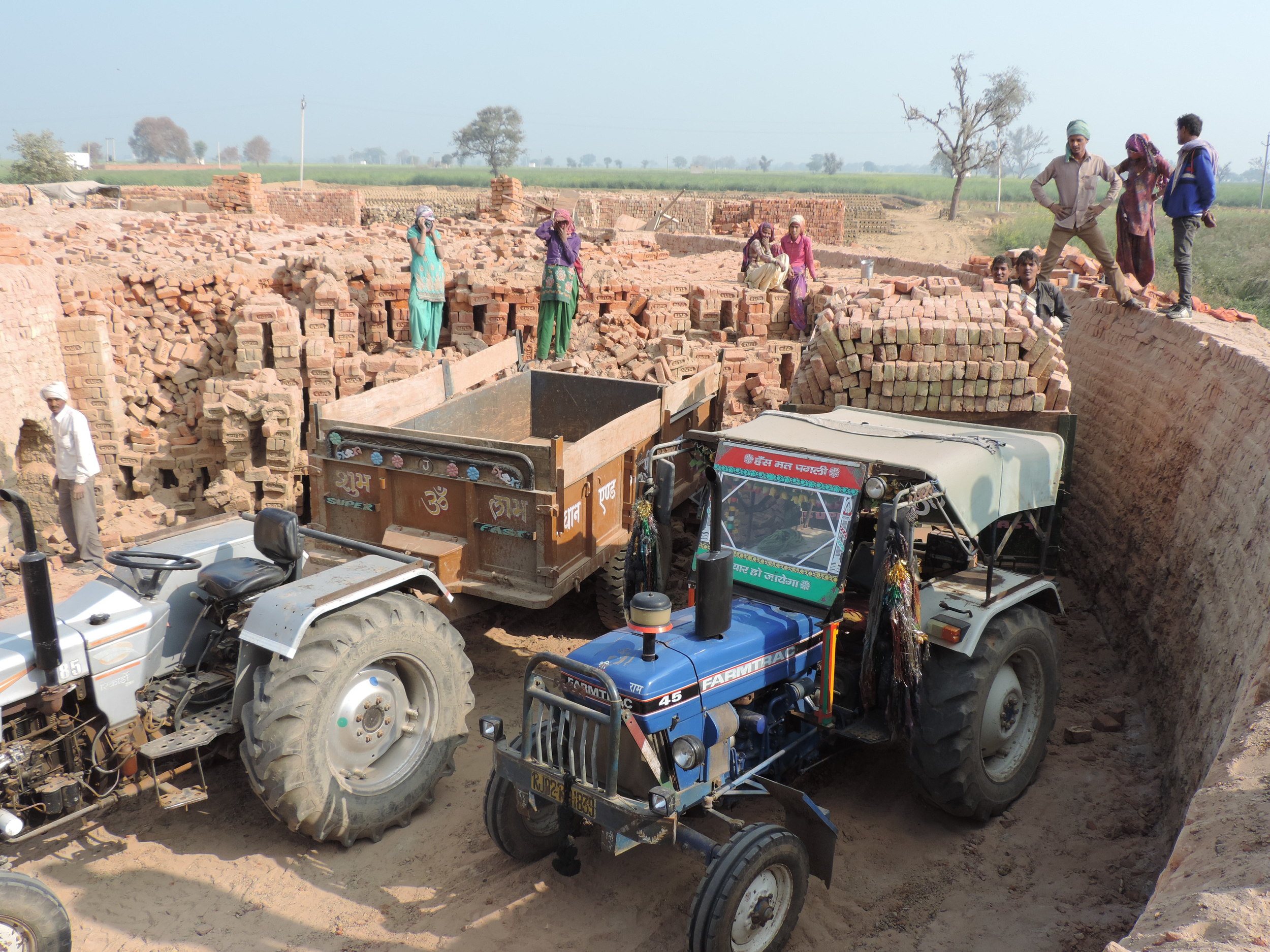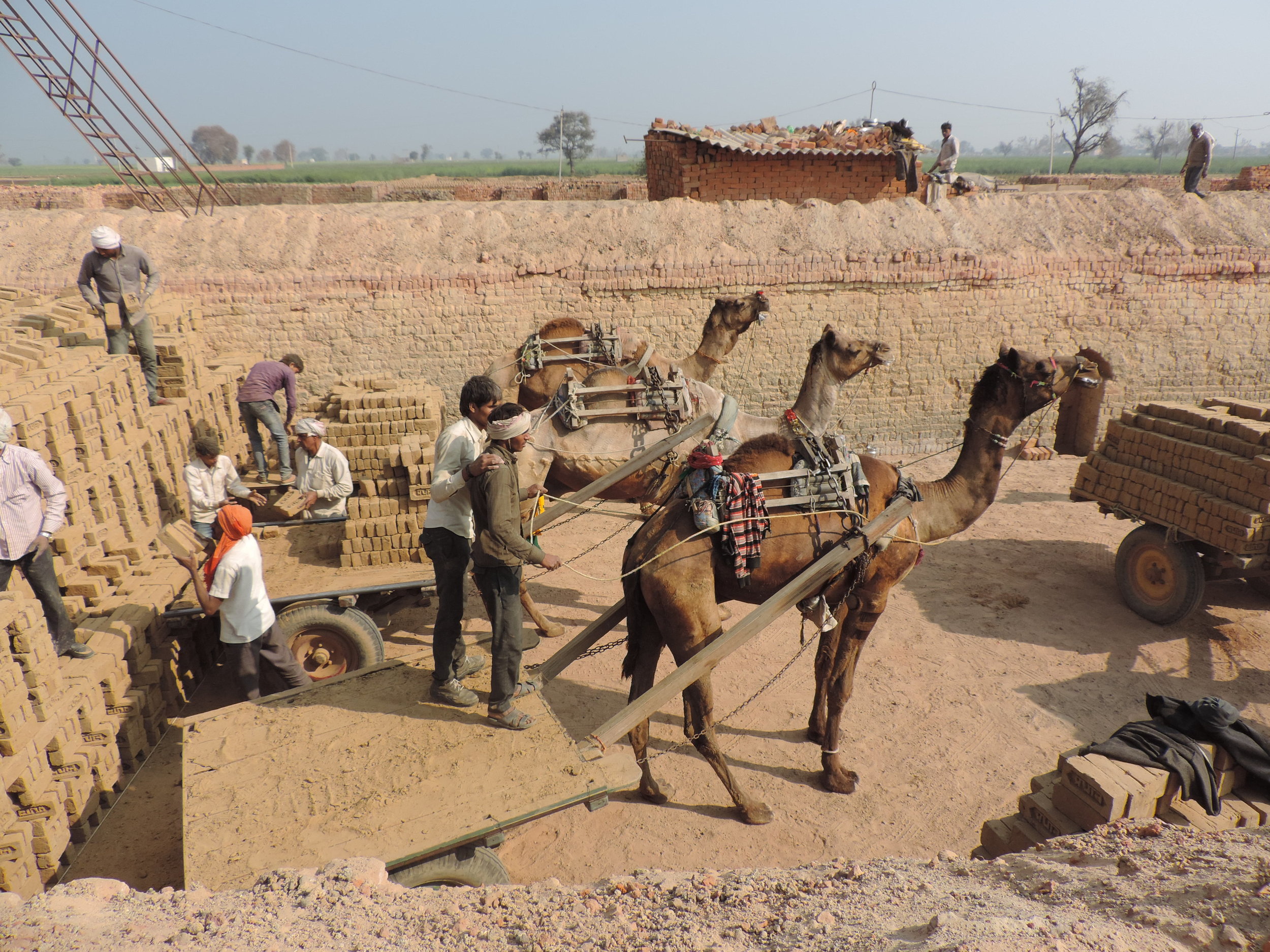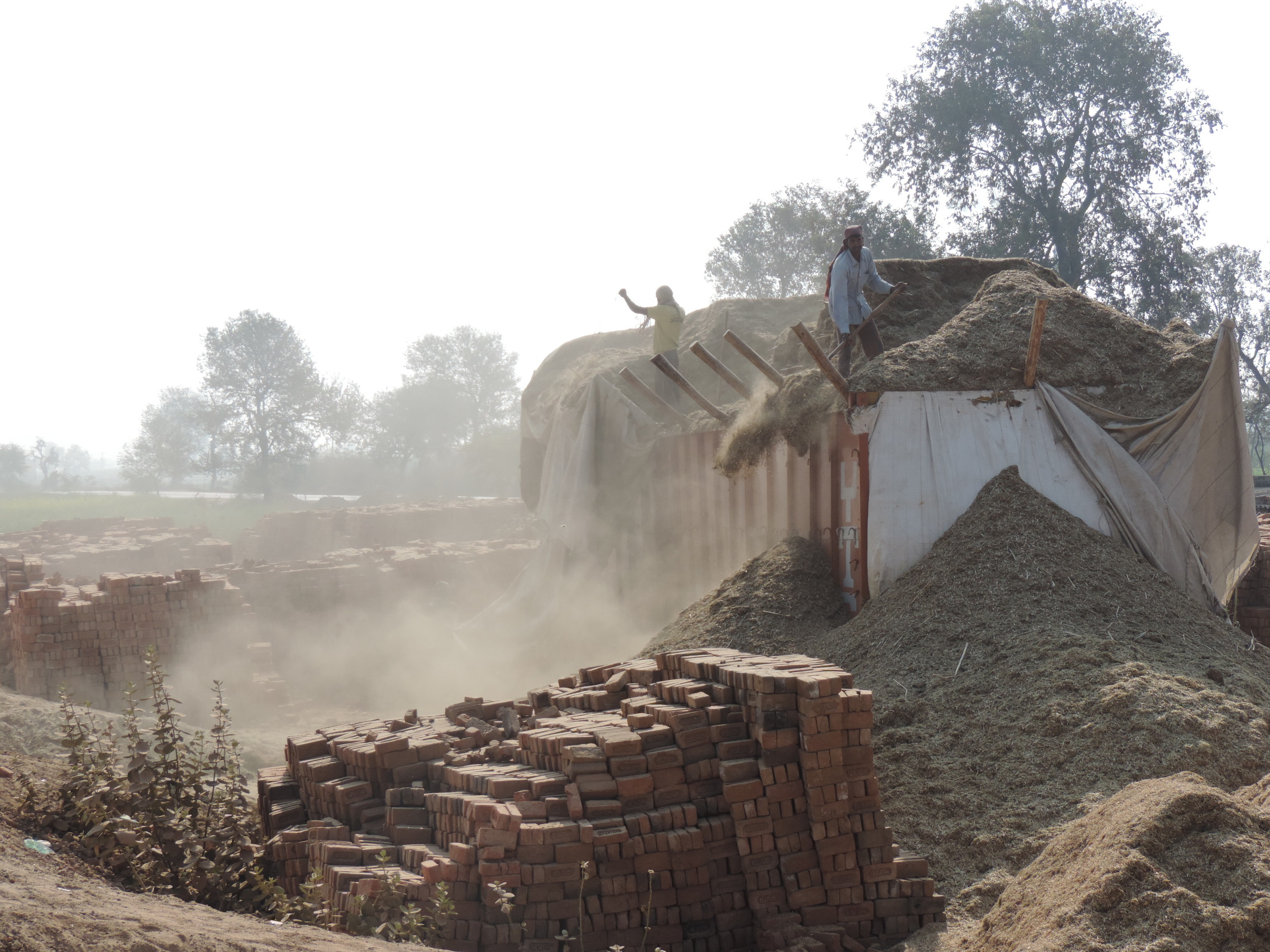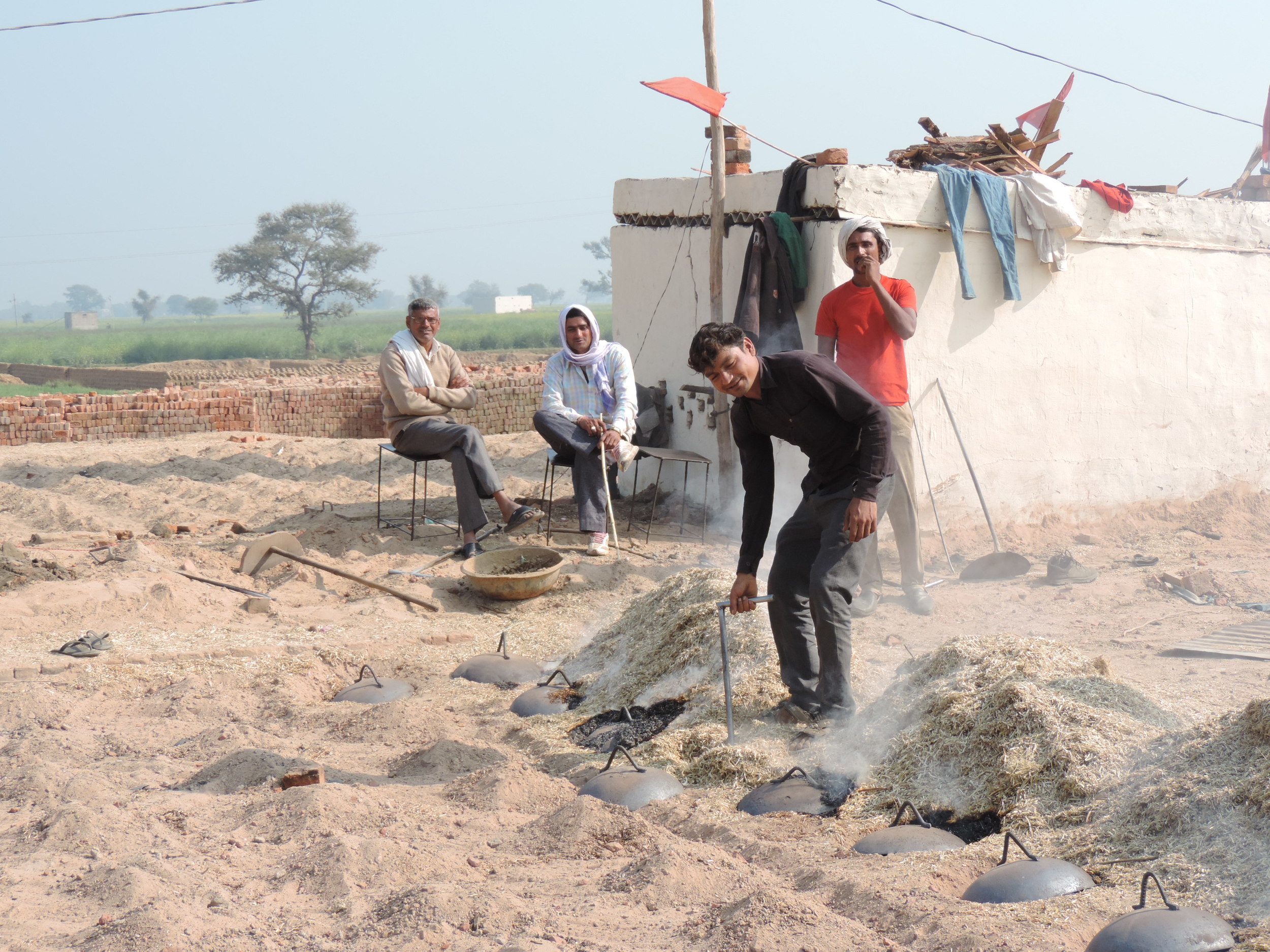The big question that drove my curiosity about brick production on Maria Island has been “How did the convicts fire bricks when they didn’t have any bricks to build a kiln?”
As it turns out, I saw the answer to my question when in India earlier this year, but didn’t realize it at the time.
I had assumed that they might have pit-fired small batches of bricks so as to produce enough to build a kiln for future firings, and that the remnants of this kiln would remain. After all there are still in existence lots of other structures built with bricks during the convict era.
My early research turned up quite detailed descriptions of the processes used to make other goods, in particular wool cloth, but nothing about bricks. Similarly, early plans detail buildings for all sorts of activity in Darlington, but I found none that extend to the Brickfields Valley area. It wasn’t until I accessed the Maria Island Brickfields Precinct Conservation Plan (1997) that I was able to make sense of what I was seeing when I walked through this area, and discovered the few artifacts that remain (none of which are signposted or appear on contemporary maps).
I revisited the Brickfields Valley again yesterday and, reinterpreting the maps and some contradictory information in the conservation plan, I discovered the area where brick firing is thought to have occurred. Only visible once you know what you are looking for, there are two distinct parallel mounds of dirt with scatters of brick breaking through the surface. It is not unusual to see scatters of bricks in many areas of this island, but these appear to align with the theory that they once formed the structure of a brick Clamp.
A Clamp is formed by building two parallel walls of fired or unfired bricks (stacked, without mortar) tapering up from a broad base, with the interior wall remaining vertical and the exterior wall battered with soil or rocks. Bricks are stacked in an open weave pattern, with the holes allowing for air, heat and fuel between. Depending on the fuel available, it may be loaded between the bricks (dung, chaff or sawdust) or on top of the bricks(wood).
The kiln I saw in India was a very large version of a clamp, designed in an oval shape to allow for continuous loading, firing and unloading. It was fueled by fine chaff that was loaded from the top, with the fire moving through the kiln according to where and how fuel was added. This would result in a much more consistent temperature being achieved across the kiln than would have been possible here on Maria Island, as the fuel would most likely have been wood, which would be difficult to distribute evenly. The variation in colour of convict bricks, while partly due to levels of Iron in the clay, is largely due to inconsistent firing temperatures.
And that also explains why some convict bricks crumble.
